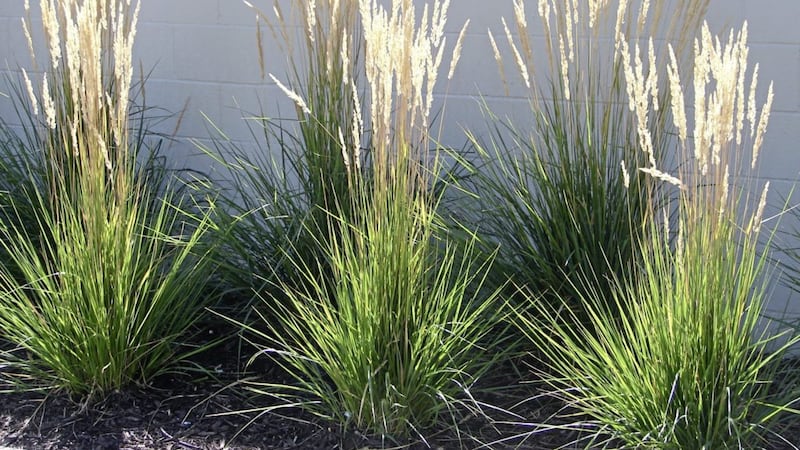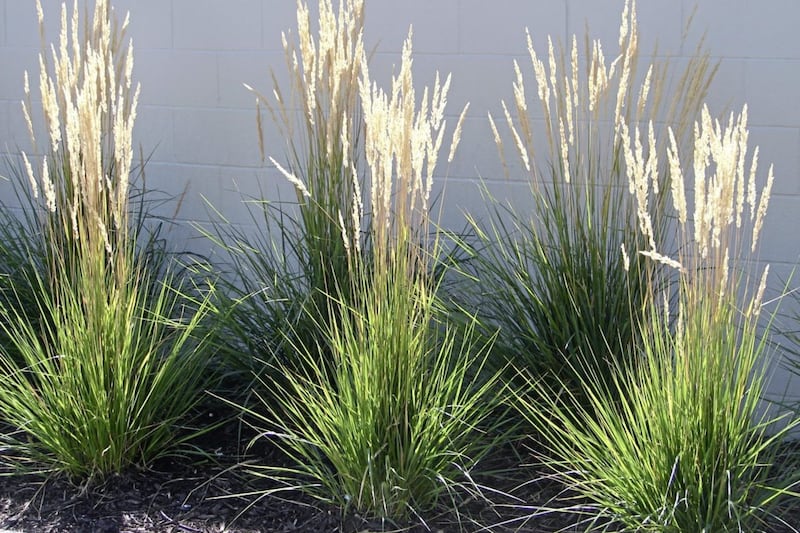I’VE taken a bit of a ribbing for describing broccoli as “sexy”. It was the purple-sprouting kind, you understand, rather than calabrese, which I think we can all agree is decidedly un-sexy.
Talk too enthusiastically about a plant’s merits in the wrong company and people think you’re rather eccentric, to say the least.
These philistines – the sort that call plants "flowers" – can’t see that it’s possible to appreciate a herbaceous perennial or shrub in the same way you would a poem, painting or piece of music.
Fearful that some of the ‘uninitiated’ may stumble upon this column and read its contents, I’ll attempt to moderate my language when describing Calamagrotis x acutifolia ‘Karl Foerster’.
I’ll concede that its name doesn’t scream ‘beautiful’ or ‘classy’, well at least not on the first reading. In a perverse way, however, this only adds to its allure.
Calamagrotis x acutifolia, commonly known as feather reed grass, is a hybrid of two species native to Europe and Asia – that’s what the ‘x’ signifies – namely Calamagrotis arundinacea and Calamagrotis epigejos.
The cross occurs naturally in the wild but only on very rare occasions. Because it’s a hybrid, it’s sterile, meaning it can only be propagated through a fluke of nature or by dividing its rhizomes.
This particular variety is named ‘Karl Foerster’ in honour of the German nurseryman and horticultural visionary who discovered it in Hamburg’s Botanical Garden in the 1930s and began selling it at his nursery some 20 years later.
He’s one of the key influences of the ‘New American Garden’ movement and the later ‘New Perennialists’, meaning the grass has become a near obligatory component in the naturalised planting schemes that define these two schools.
So, what makes the ‘Karl Foerster’ variety so seductive? After all, it’s just a grass.
Firstly, there’s its height. At its base there’s an ordinary looking clump of strappy green leaves. In summer, however, it sends up long, vertical stalks up to six feet in height, which are topped with feathery plumes that catch the sunlight, imbuing them with a pinky purple hue early in the season.
As the sun lowers, these seed heads act as a filter for the light, as they silhouette against the evening sky.
It’s also a plant that dances like no other. The slightest breeze has the heads swaying in unison, while a stronger wind can hold them bowing at 45 degrees.
Plant en masse a you create a sandy-coloured sea of heads that only needs the slightest breeze to make it move in mesmerising waves. Yet there’s a robustness to the stems that means they never break.
If there is a slight drawback, it’s that the heads bend downwards when wet. Remove the rainwater with a gentle shake, however, and they’ll be upright by the time the sun comes out.
In autumn and winter, like so many ornamental grasses, this Calamagrotis gets more becoming as it dies. Remaining erect, the stems and heads go pale but retain their shape. When a hard frost arrives it’s like the plant has been dipped in Diamante.
Not for every garden or every gardener, ‘Karl Foerster’ suits those who like naturalised planting schemes that mimic nature. Put it in a border alongside, rudbeckia, echinacea and globe thistles to create your own little prairie.
Some are even so bold as to plant it in rectangular blocks with nothing else – and it still looks fantastic.




